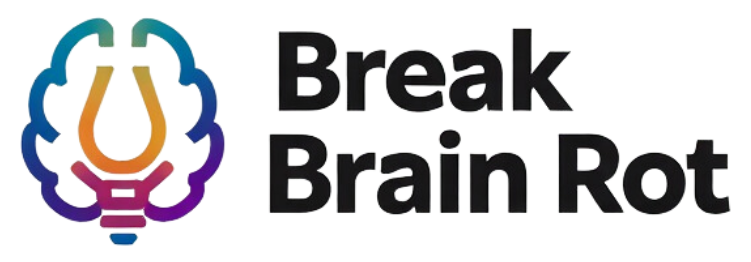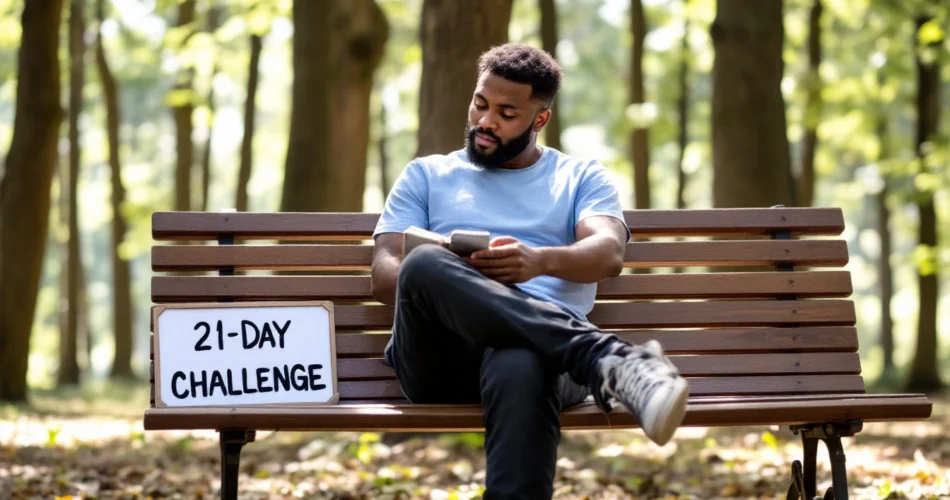Do you ever open a social media app for “just a minute,” only to lose an hour to endless scrolling? You’re not alone. Constant notifications, comparisons, and digital noise can leave you feeling anxious and distracted. That’s where a three week social media detox can make a life-changing difference. The structured 21-day social media detox challenge is designed to help you reset your relationship with technology, reclaim mental clarity, and restore genuine connection. Over the next few sections, you’ll learn how to prepare, track progress, and sustain these healthy digital habits long after the challenge ends. Ready to take back control? Let’s start your journey toward a more balanced, mindful digital life.
Table of Contents
- Why a Three Week Social Media Detox Can Transform Your Life
- Preparing for the 21-Day Social Media Detox Challenge
- Weekly Breakdown of the Three Week Detox
- Tracking Progress and Managing Challenges
- Life After the 21-Day Social Media Detox Challenge
- FAQs
- Conclusion
Why a Three Week Social Media Detox Can Transform Your Life
Understanding Digital Overload
With billions of people using social media daily, digital overload has become a real psychological struggle. According to the Pew Research Center, most adults report feeling overwhelmed by the constant stream of digital information. Excessive screen time contributes to stress, sleep disruption, and even physical eye strain. This is precisely why the 21-day social media detox challenge can help you reset your focus and rediscover the world outside your screens.
Psychological Benefits of Unplugging
Taking a step back from social platforms enhances mental well-being, boosts productivity, and improves sleep quality. During your detox, you’ll likely notice a calmer mind and greater attention span—benefits that extend beyond the digital realm. Disconnecting also opens mental space for creativity, deep reflection, and improved relationships.
Identifying Your Digital Triggers
Before starting your three week social media detox, identify what drives you to scroll. Is it boredom, habit, or stress relief? Understanding your triggers helps target the real causes of your online addiction. You can learn more about spotting these patterns in our guide on How to Identify Digital Addiction Signs.

Preparing for the 21-Day Social Media Detox Challenge
Set Clear Intentions and Goals
Every meaningful detox begins with clear intentions. Decide why you’re committing to this challenge: Is it to sleep better, reconnect with loved ones, or boost productivity? Measure your progress with specific goals, such as reducing screen time by 50%. For motivation frameworks, explore Psychology Today’s resources on habit formation.
Inform Your Circle and Build Accountability
Let your friends, family, and colleagues know about your detox plan. Not only will this clarify your boundaries, but it’ll also foster accountability. You can even invite others to join, transforming it into a shared growth experience. To strengthen your support system, check out our guide on Building Accountability for Better Habits.
Tools and Apps to Support Your Detox
Use technology to save yourself from technology. Apps like Moment, Forest, or Digital Wellbeing can help track screen time and manage online habits. Start a daily journal to record emotions and milestones along your 21-day social media detox challenge journey.
Weekly Breakdown of the Three Week Detox
Week 1 – Awareness and Reduction
The first week is all about noticing your patterns. Begin by turning off unnecessary notifications and tracking your social media use. Replace your scrolling time with daily walks, reading, or mindfulness exercises. Every small step helps reduce your digital dependence.
Week 2 – Reflection and Reconnection
In week two, use the momentum from week one to connect with yourself and others offline. Explore forgotten hobbies, schedule face-to-face time with friends, or volunteer locally. You may experience FOMO (fear of missing out), but treat it as a sign that your mind is unwinding from constant comparison.
Week 3 – Rebuilding Healthy Boundaries
As you enter the final stretch, focus on developing healthy, lasting routines. Choose specific “social media windows” to engage online consciously rather than compulsively. According to the Harvard Health Blog, small behavioral shifts, when done consistently, can lead to sustainable habit change. End the challenge with gratitude for rediscovering your mental freedom.
Tracking Progress and Managing Challenges
Overcoming Withdrawal Symptoms
It’s normal to feel restless or bored during the first few days. Combat these withdrawal symptoms with self-care activities—journaling, exercising, or calling a friend. Keep in mind, you’re retraining your brain for healthier dopamine sources.
Journaling and Self-Reflection Techniques
Daily journaling deepens your self-awareness throughout this three week social media detox. Record when cravings strike, how you feel, and what triggers them. This reflection reinforces your purpose and keeps you grounded. Explore more on the Benefits of Mindful Journaling.
Evaluating Success After 21 Days
When you finish the 21-day social media detox challenge, evaluate your results. Compare your initial screen time and current metrics. Celebrate your wins—big or small. Success is not perfection; it’s progress toward intentional living.
Life After the 21-Day Social Media Detox Challenge
Reintroducing Social Media Mindfully
Once the detox ends, reintroduce social platforms consciously. Follow pages that inspire growth, unfollow negativity, and set time limits. Treat social media as a tool, not a reflex.
Incorporating Digital Wellness into Daily Life
Create a schedule for digital tasks and set “no-phone zones.” Prioritize hobbies, face-to-face conversations, and moments of stillness to maintain balance. You can find more tips in our resource on Managing Screen Time Effectively.
Continuing the Journey Toward Digital Mindfulness
Digital wellness doesn’t end after 21 days. Consider joining online or local communities dedicated to mindful living. You might even take extended detoxes every few months to recharge mentally and emotionally. For professional insights, explore studies by the American Psychological Association.
Frequently Asked Questions
What should I expect during the first few days of a three week social media detox?
Expect restlessness, boredom, or a strong urge to check notifications. These sensations fade as your brain adjusts to new routines. Replace online time with mindful activities for smoother adaptation.
Can a 21-day social media detox challenge improve mental health and productivity?
Absolutely. Reducing digital distractions helps you focus better, sleep more soundly, and lower stress levels. Over time, you’ll experience increased clarity and productivity.
How can I maintain balance after completing the detox?
Set intentional screen time limits and regularly assess your emotional reactions to social media. Incorporate short digital breaks into your weekly schedule to sustain your progress.
Do I have to completely delete my social media apps during the detox?
Not necessarily. You can log out, hide notifications, or move apps into a separate folder. The goal is to reduce mindless use, not eliminate social media forever.
What if my job requires me to use social media?
In that case, restrict your use to work-related times only. Use downtime wisely—disconnect immediately after completing necessary tasks.
Conclusion
Completing a three week social media detox isn’t just about unplugging—it’s about reconnecting with what truly matters. The 21-day social media detox challenge helps you regain focus, peace, and presence in a world of constant digital noise. Take your first step today, share your progress, and inspire others to embrace digital mindfulness. Remember, less scrolling often leads to more living. Refresh your mind—your future self will thank you.


